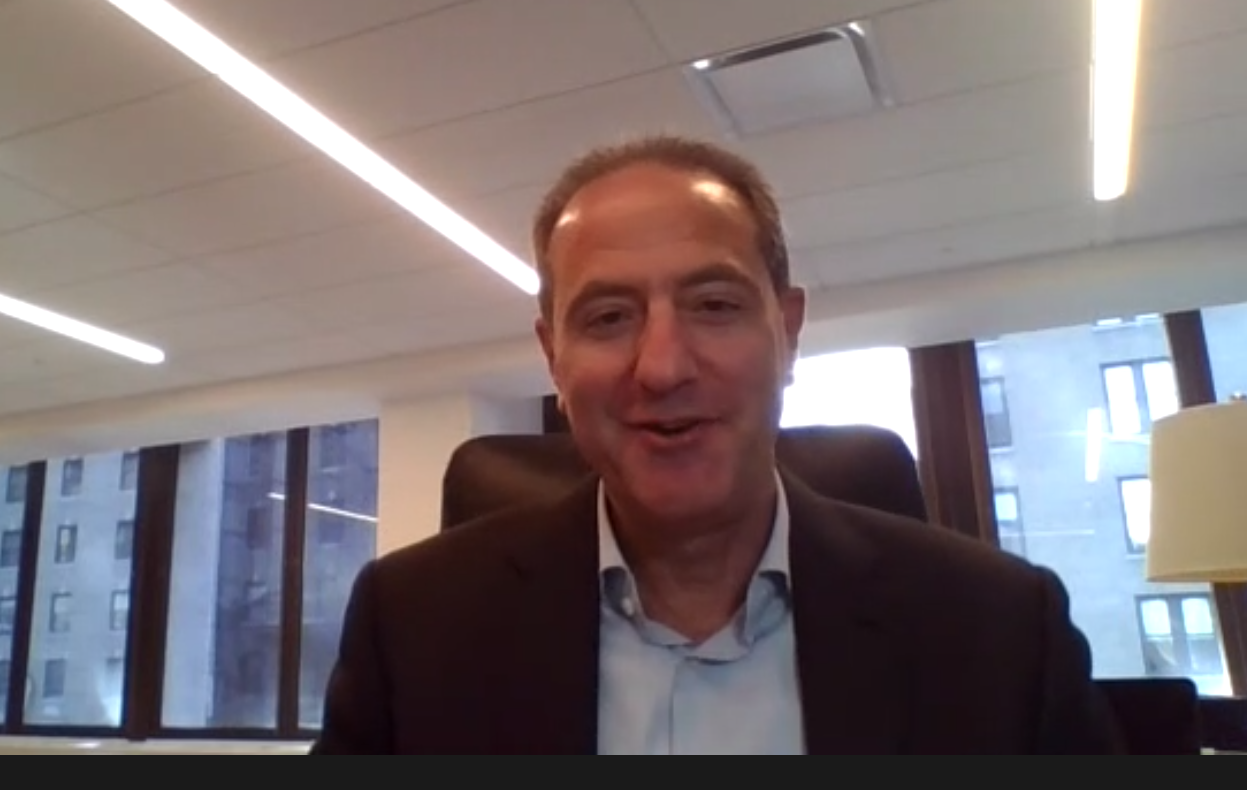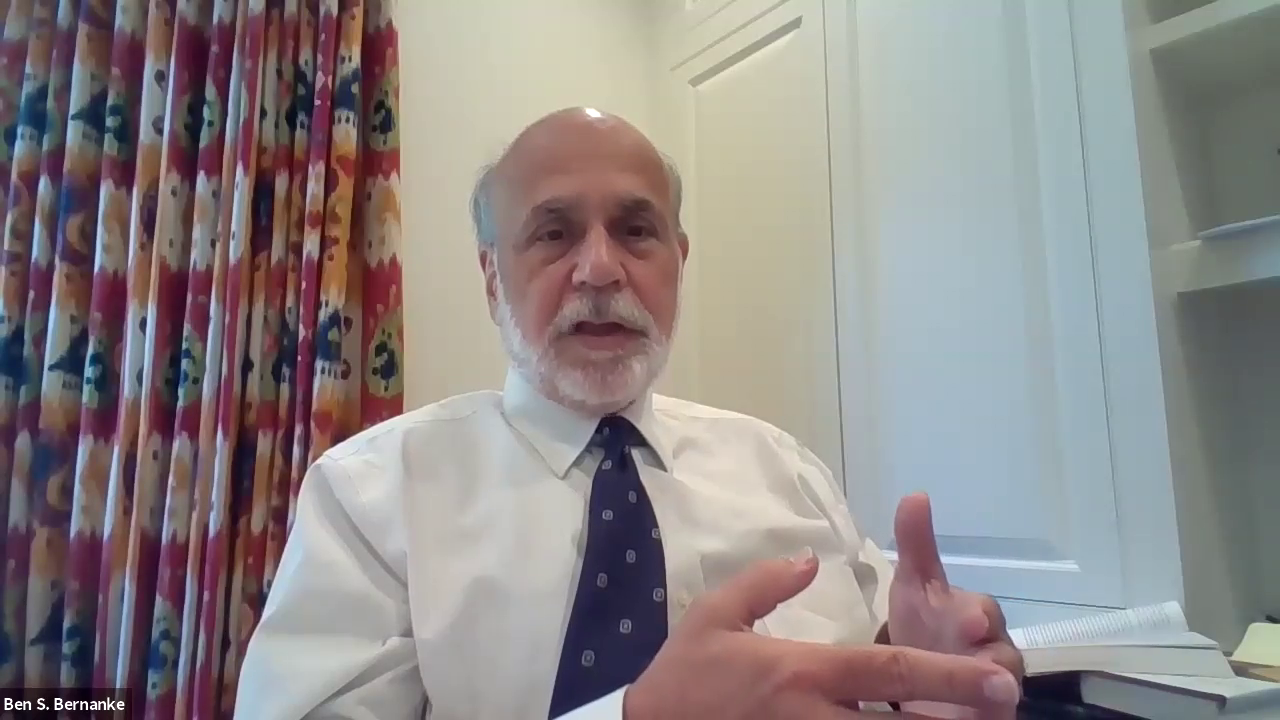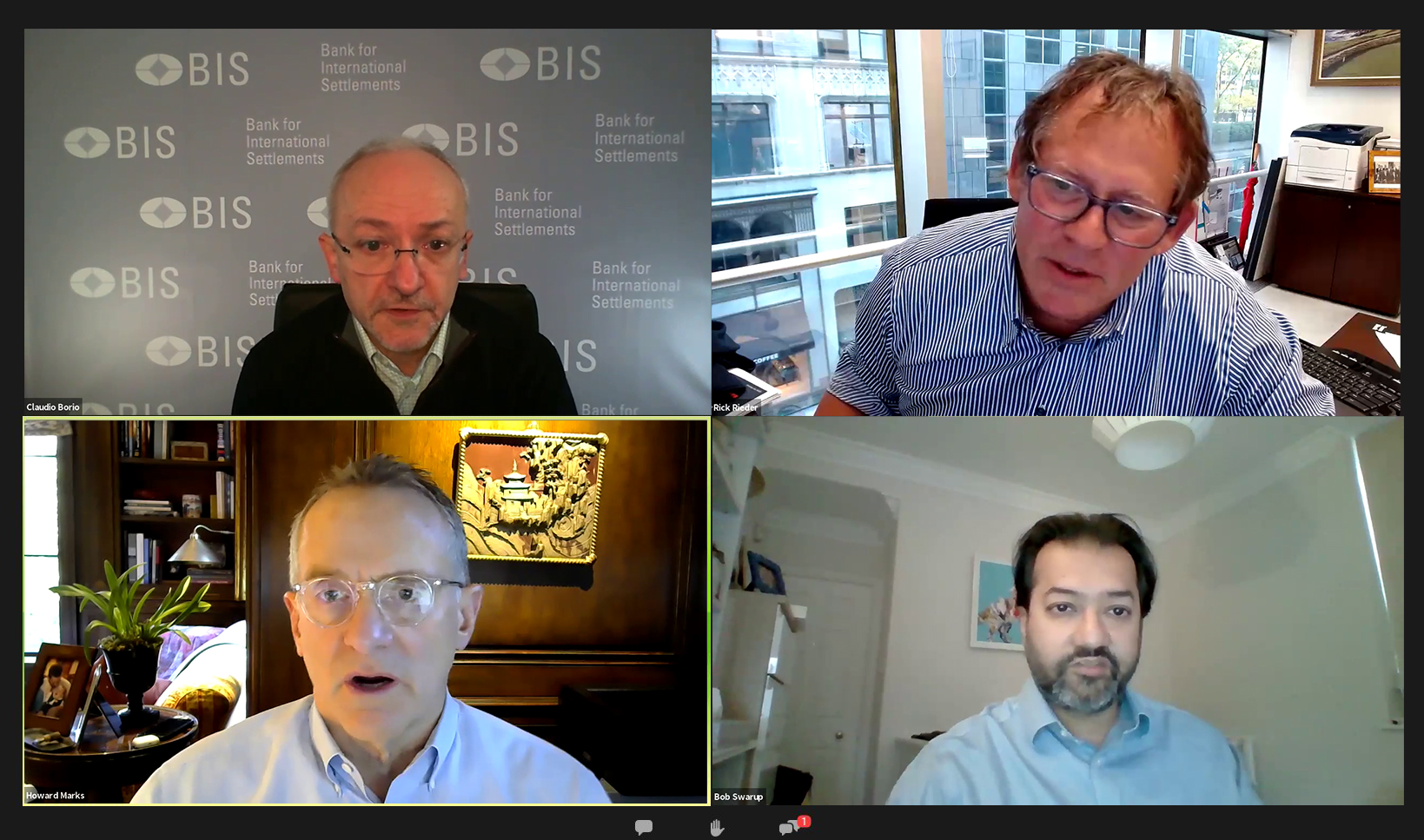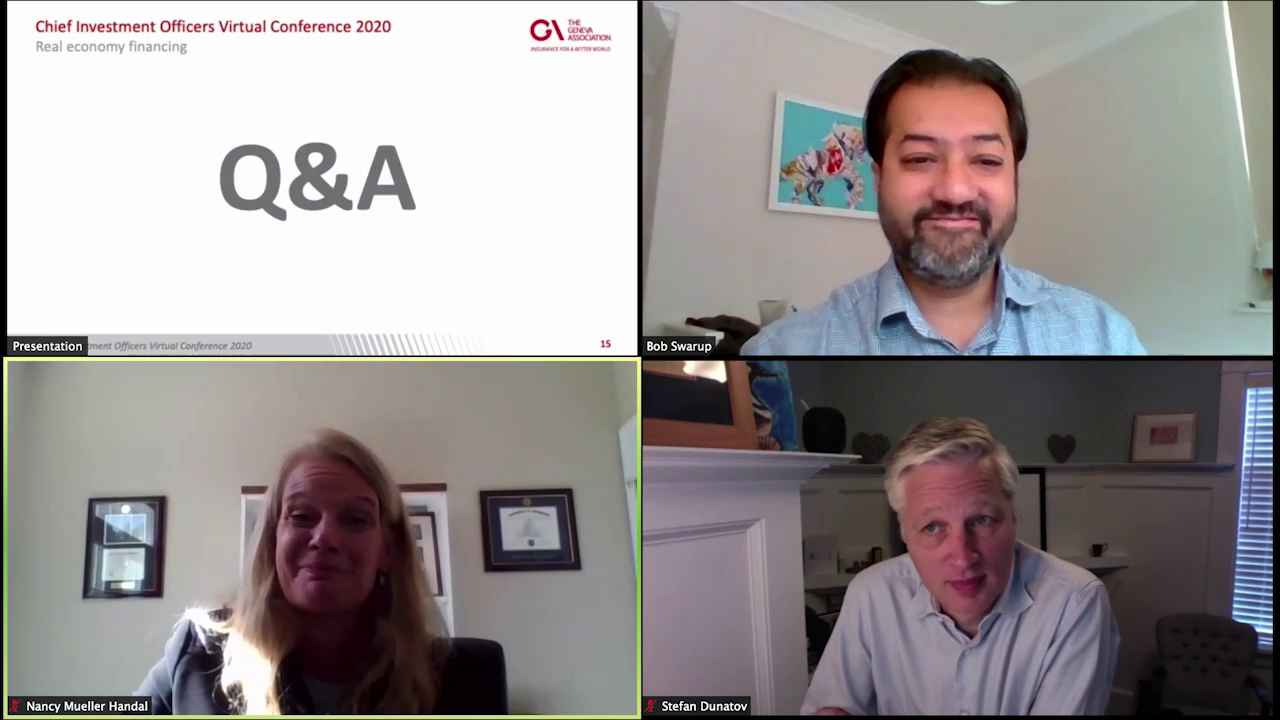Virtual conference
Through a mirror darkly: Understanding the new normal
The COVID-19 pandemic has rewritten the rules for insurance portfolios. The Geneva Association’s 2020 Chief Investment Officers Conference, co-hosted by MetLife on 14–15 October 2020 and held in a digital setting, was therefore aptly titled Through a Mirror Darkly, reflecting both the prevailing uncertainty and need for clarity in our planning and decision-making.
Quo Vadis?
Investors had plenty to worry them in 2019: ongoing U.S.–China trade tensions, the noise of Brexit, the maturity of the credit cycle, new reviews of regulation, the tensions of central banking balance sheets, worries about global growth, continued populism and more.
They seem like happier times now. In 2020 we entered (and exited) the fastest bear market in a hundred years and saw a global economy go into cardiac arrest as the flow of capital and money through its arteries seized up. Central bank balance sheets ballooned and rates – already so low – plunged further. Businesses globally found themselves in growing financial distress, as things we took for granted, such as travel, suddenly came to a grinding halt. The economic cost to date has been high, with hundreds of millions of jobs at risk globally according to the ILO and no real sense of when stabilisation might arrive. When it does, the scars will run deep and take time to heal. Today, a second wave appears to be underway in Europe and the U.S., underscoring that this is not a short-term moment of economic distress, but a deeper crisis that may be with us for a while yet.
Slowing to no growth, low and even negative yields, the need to find alternative sources of return and political uncertainty are all set to dominate insurance investment minds going forward. Alongside, minimising earnings volatility, avoiding defaults and protecting returns on capital continue to drive our businesses.
The Geneva Association’s 2020 Chief Investment Officers Conference gathered together CIOs from our member organisations around the world along with leading thinkers to begin the task of distilling answers from all this complexity.
Day 1: Macro matters

Michel Khalaf, CEO MetLife, gives welcome remarks, highlighting that in order to best support customers in these extraordinary times, insurance asset managers should stick to their core strengths: ALM, portfolio diversification, rigorous underwriting and originating private assets.
Fireside chat

Ben S. Bernanke, Former Chair, Federal Reserve and Distinguished Fellow in Residence, Brookings Institution
Following the first wave of COVID-19, the recovery has been faster than expected, with the U.S. economy certainly showing more resilience, but the challenge of rebuilding the economy and confidence, as well as the hole left in the aftermath of the pandemic also need to be appreciated. As Ben Bernanke put it, “We went down on an elevator but are coming up on the stairs… and they are getting steeper.” In other words, with the pandemic still with us, recovery will be slow and support remains critical, as does getting control of the public health situation. The virus remains far from subdued, with continued weakness in key sectors, and worries must certainly be growing at the Fed about scarring as businesses close, jobs are lost and confidence ebbs.
The immediate impact of monetary policy has been positive. Quantitative easing has provided broad support for the economy, while bond purchases have also supported credit markets, restoring liquidity and confidence. But there are also limits. The Fed, for example, has not been as successful in driving lending to Main Street, namely businesses. Many central banks are either out of monetary ammunition after the last decade or finding it increasingly difficult to add meaningful stimulus in the short and long term. The downturn has also been unusual in that it is not broad-based but far more concentrated in the services economy.
That makes fiscal policy more important than ever, and it is worth noting that both the Fed and ECB have been calling for more direct intervention from governments. Beyond bringing more firepower to the table, fiscal policy is also far more targeted, for example, helping airlines or SMEs specifically. The biggest bang for the buck is most likely health, which is critical to removing fear and allowing a sense of normality to return to society.
Session 1: Till debt us do part

Top row: Claudio Borio, Head of Monetary and Economic Department, Bank of International Settlements; Rick Rieder, CIO, Global Fixed Income, Blackrock. Bottom row: Howard Marks, Co-Chairman and Co-Founder, Oaktree Capital; Bob Swarup, Director Chief Investment Officer Network, The Geneva Association
There are challenges and concerns around both the structural fragilities of our economies and the implications for fixed income – by far the dominant portion of insurance portfolios.
Debt has been a growing challenge for two decades now, and appears to be an even bigger challenge going forward. Household debt was already high before the last financial crisis, followed by government debt in the intervening years and greatly exacerbated by the pandemic, and corporate debt. All of this represents a growing fragility.
Setting aside the possible reasons for this, we must confront the burning question: where do we go now?
In the short term, there is a growing risk that we are merely transmuting from the liquidity to the solvency phase of the pandemic-induced economic crisis. The Bank for International Settlements and others expect more bankruptcies and restructuring, while the need to deal with today’s indebtedness grows. It is also important to ensure resources are allocated to viable businesses and sectors of the economy in the long-term. Otherwise, governments risk either finding themselves in unsustainable fiscal positions, particularly for those that do not issue in their own currency, or in a debt trap, where the rise in debt eventually means that rates cannot rise because the economy is too vulnerable and sensitive to debt servicing costs.
It appears we live in a binary world now of very disparate outcomes. On one side, there is Goldilocks – the outlook improves, growth picks up and we find ourselves in a robust and sustainable recovery, though policymakers will also need to ensure they build in buffers to manage future downturns more effectively. On the other side, there are Gremlins – domestic priorities dominate, economies close up and we find ourselves further down the deglobalisation path, with public sectors becoming a much greater part of the economy and fragility continuing.
The arbiter today is policy – not just in terms of immediate action but also in terms of structural reform. For insurers, the crush for yield in a low rate environment is particularly worrying. Debt has become cheap and plentiful, as investors look to deploy large amounts of capital but find that sovereigns and investment grade credit simply do not provide enough of a return, particularly in real terms. This is creating a race to the bottom, as people seek out yield at the expense of credit quality, and weakening covenants across the board.
Day 2: A full plate – Managing the insurance portfolio today
Session 2: The crux of the core

Top row: Mark Fishman, Former CEO and CIO, Aesir Credit Management. Bottom row: Bob Swarup, Director Chief Investment Officer Network, The Geneva Association; Russell Busst, CEO and CIO Europe, Conning
For insurers, there are no easy answers in an increasingly binary world. On one hand, the economy appears weaker, more fragile and in greater need of policymaker support than ever. On the other hand, markets are ebullient and frothier than ever.
In the near to medium term, lower for longer interest rates are here to stay, challenging the business model. Longer-term, weaker fundamentals and increased tail risks create challenges when it comes to forecasting returns and making longer-term investments. Around all of this lies unpredictable balance sheet volatility and a sense of foreboding.
Given the current interest rate environment, with rates in much of the world bumping along zero (and sometimes below) in nominal terms and negative in real terms, there is an argument that much of the short duration sovereign and investment grade fixed income universe is essentially uninvestable. That has driven investors and insurers to seek income from other places. There has been a rise in interest in real estate (residential and commercial), emerging markets, direct lending to corporates, trade finance and infrastructure.
That trend is set to continue. Some may choose to adopt a barbell strategy, holding quality assets, even if expensive, and generating returns through satellite allocations to these new emerging areas. Others may choose to take more credit risk across the board. Some may even look to equity, as they seek dependable income but are unable to generate sufficient returns through fixed income. Regardless of choice, the implications for insurance portfolios are profound.
Session 3: Real economy financing

Top row: Bob Swarup, Director Chief Investment Officer Network, The Geneva Association. Bottom row: Nancy Mueller Handal, Head of Private Fixed Income and Alternatives, MetLife; Stefan Dunatov, Executive Vice President, Investment Strategy & Risk, British Columbia Investment Management Corporation (BCI)
The quantum of debt in the economy today creates a demand for refinancing, which is further accentuated by the need to deploy significant capital in the aftermath of the pandemic to restart growth, viz. the talk of a Green New Deal in Europe, for example. The dislocations created in the immediate aftermath in Q1 and Q2 of this year allowed those that were prepared to deploy significant capital, addressing both fissures in the global economy and bolstering the portfolio in a time of volatility.
The demand for yield is across all private assets these days, creating a bewildering choice for insurers. Their size and need to get up the familiarity curve also present challenges. The need to carve out beach-heads in new niches and build understanding means that deployment can be painfully slow in the real world, particularly as opportunities can quickly become crowded or uneconomic given the smaller sizes of these new markets and the attendant capacity constraints as insurers look to deploy the large allocations needed to meaningfully move the needle.
It is clear that insurers need to have a longer-term strategy in place. They will need to build the network of links to originate these new assets, learn how to deal with them when they go wrong, and navigate their organisational cultures to make sure there is buy-in for these changes and that they are aligned with the insurer’s wider business strategy.
Conclusions
Though 2020 has been brutal, bruising and humbling, it is heartening to see the speed of action from policymakers and the active debate on where insurers can play a part in a future recovery. It is important, however, not to forget the importance of the longer-term picture at the expense of today’s more urgent problems. Our discussions revealed there is a lot of fragility out there, and the long-run effects of the decisions made today could be significant, underscoring the need for care and planning. In today’s binary world, policy is the arbiter between a Goldilocks or Gremlins outcome.
We look forward, in 2021, to examining how these decisions are beginning to turn out and how the industry evolves alongside.






